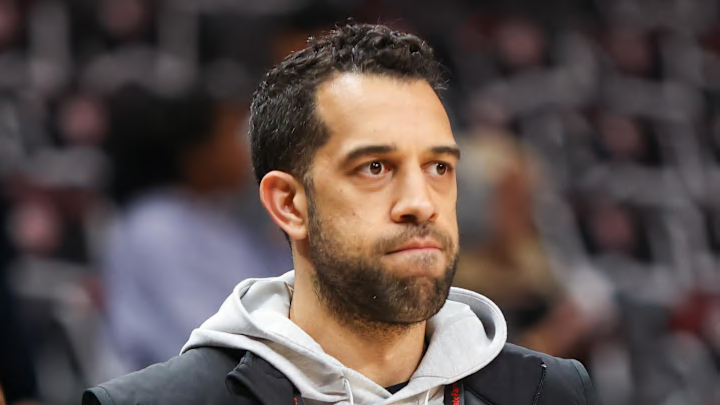The Atlanta Hawks are the No. 8 seed in the Eastern Conference heading into their contest against the Milwaukee Bucks on March 30. They essentially control their destiny, with two games against the team ahead of them – the Orlando Magic – yet to come.
For a season rife with changes and injuries, this is no small feat.
And yet, Sports Illustrated’s Rohan Roman pointed out how the Hawks may have made their situation more difficult than it needed to be.
“The last team to win a championship while being outside the top-ten in opponent 3P% is the 2020-21 Milwaukee Bucks. They were 29th, but they elevated their game in the playoffs to allowing an opposing three-point percentage of 35.2%. That would have been the fourth-best mark in the NBA across a whole season,” Roman wrote on March 29.
“Currently, the Hawks let up the third-worst mark from deep at 37.4%. Since the trade deadline on February 6th, they've stayed at that ranking and actually gotten worse, allowing teams to shoot 38.2% from deep.”
Davion was a spark off the bench with his defense & shooting behind the arc (4/5 3PM) 🔥 pic.twitter.com/wp7iItTuSX
— Miami HEAT (@MiamiHEAT) March 28, 2025
“The infrastructure of the Hawks’ perimeter defense is currently flawed,” Roman wrote, naming Dyson Daniels as a pro. “However, there aren't really any other plus defenders on the roster.”
Hawks compounded bad injury luck with trade deadline decisions
Roman says the Hawks’ woes are not a function of personnel changes. At least not solely, pointing to the loss of Jalen Johnson as a defender. He suffered a shoulder injury before the trade deadline. The Hawks also lost 2023 first-round pick Kobe Bufkin to a shoulder injury.
The impact of Bufkin’s loss as a defender and backup point guard is more theoretical than Johnson’s contributions, but it still speaks to the issues the Hawks have endured that were beyond their control.
However, Roman also points to the Hawks’ trade deadline dealings.
Specifically, Roman parsed through the trade with the Cleveland Cavaliers that swapped out De’Andre Hunter for Caris LeVert and Georges Niang, but also mentioned Terance Mann. All three players come off the Hawks’ bench.
While Roman commended their offensive contributions, he called LeVert an “inconsistent” defender, said Mann “has not been good” with the Hawks on that end, and that Niang is a “below-average option” whose feet are too slow.
For the Hawks it is a grim reality, but one they may have accepted willingly.
First, the Hawks have struggled with perimeter defense for years, even when they had Hunter healthy and playing well.
They know what Hunter is, or at least what he was for them, as a player. It is also short-sighted to view this trade through the lens of this season alone, despite what is at stake if the Hawks fail to reach the playoffs. They did acquire two future first-round pick swaps in the transaction.
As Romann noted, the Hawks have a lot going for them going forward.
Trading Hunter helped create some financial flexibility. They can easily convince themselves that moving on from any of their pending unrestricted free agents is reasonable.
Most importantly, though, the Hawks will get Johnson back next season. They have Dyson Daniels on an unexpected upward trajectory, and the 2024 No. 1 overall pick Zaccharie Risacher is already an advanced defender, but especially for a 19-year-old rookie.
For the Hawks, perhaps it is as simple as trying one thing failed, so they opted for another.
How far the Hawks' transition – whatever it may be – goes this offseason remains the potential $229 million question, though, as Trae Young becomes extension eligible this offseason.
